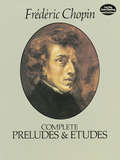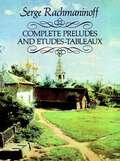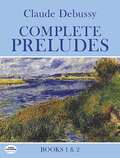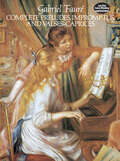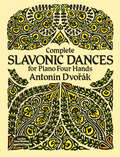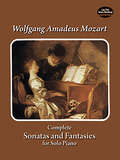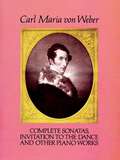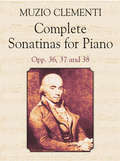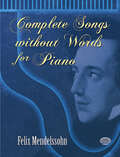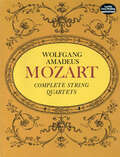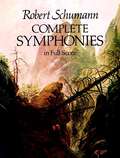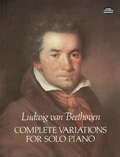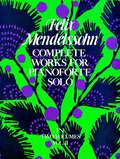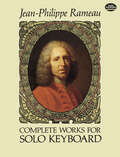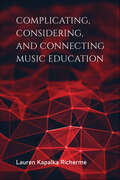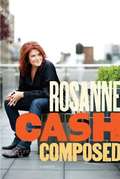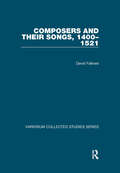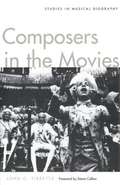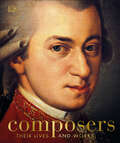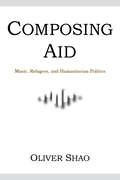- Table View
- List View
Complete Piano Sonatas, Volume II
by Ludwig Van BeethovenThe entire corpus of Beethoven's piano sonatas is contained in this two-volume work -- 32 sonatas in all. Volume One contains the fifteen sonatas from Beethoven's first period, including the popular Pathétique, Moonlight, and Pastorale sonatas. Volume Two contains the seventeen sonatas from Beethoven's second and third periods, including the Waldstein, the Appassionata, and the Hammerklavier.The music is reproduced directly from the exemplary Universal-Edition set edited by Heinrich Schenker. Combining scrupulous scholarship and profound artistic vision, Schenker achieved an edition which is universally admired by musicians and scholars. He used more autographs as sources than any previous editor of the sonatas, and he was the first to reproduce in print the visual impression of the autographs. For this Dover edition, Schenker's footnotes have been translated into English and his preface retranslated. A new introduction by Carl Schachter has also been included.Noteheads have been reproduced in a size enough to be read easily at the keyboard. Margins and spaces between staves are generous, permitting insertion of written notes, analysis, fingerings, etc. Running measure numbers and many fingerings have already been included by the editor -- the last a particularly unusual and valuable feature of this edition. This edition will be welcomed by all pianists, both professional and amateur, for its accuracy and reliability; it is highly desirable for instruction, study, reference, and enjoyment.
Complete Preludes and Etudes (Dover Classical Piano Music)
by Frédéric ChopinChopin’s piano works are of such uniformly high quality that they are all absolutely essential in the repertoire of any aspiring pianist. The Preludes and Etudes are exquisitely beautiful examples of his genius. Numbering 52 pieces in all, they are reproduced here from the authoritative Mikuli edition and are available for the first time in a low-priced, one-volume publication. The opus listings are: 25 Preludes — Op. 28, Nos. 1–24; Prelude in C-sharp Minor, Op. 45. 27 Etudes — Op. 10, Nos. 1–12; Op. 25, Nos. 1–12; and Trois Nouvelles Etudes Unabridged (1998) republication of works from an authoritative early edition. New unified table of contents.
Complete Preludes and Etudes-Tableaux (Dover Music For Piano Ser.)
by Serge RachmaninoffThe 24 preludes and 17 etudes-tableaux of Serge Rachmaninoff include what are possibly his finest compositions for solo piano. Each of these masterly works is included in this complete collection, reproduced from recent, authoritative Russian editions. They include: Prelude, Op. 3, No. 2; Ten Preludes, Op. 23; Thirteen Preludes, Op. 32; Eight Etudes-tableaux, Op. 33; Nine Etudes-tableaux, Op. 39. Among these are the enormously popular C-sharp minor prelude, Op. 3, No. 2; the G-minor prelude, Op. 23, No. 5; and the B-minor prelude, Op. 32, No. 10 — classics that have made Rachmaninoff one of the most performed and recorded modern composers.Each of these works reflects Rachmaninoff's emotional intensity, his thrilling gifts as a melodist and his ability to crystallize perfectly a particular mood or sentiment. In their sonorous textures and rich embellishment, they reflect as well his sovereign command of keyboard technique and his spectacular gifts as a pianist (he was one of the very greatest pianists of the 20th century). This beautifully produced yet inexpensive edition will provide both amateur and professional pianists a lifetime of study and enjoyment, and will afford music lovers as well the deep pleasures of following, music in hand, live and recorded performances of these keyboard masterpieces.
Complete Preludes, Books 1 and 2 (Dover Classical Piano Music)
by Claude DebussyHere, in one volume, are two bodies of work that, perhaps more than any others, reveal the essence of Claude Debussy's extraordinary expressiveness and his innovative gifts for musical imagery. Each book contains twelve preludes for the piano, many of them known to today's musical audiences because of their great popularity with pianists worldwide. Ranging from the mystical "La Cathédrale engloutie" to the capricious "Ondine" to the explosive "Feux d'artifice," they offer special joys to pianists of varying levels of ability.Other favorites from the piano repertoire in this collection include: "Danseuses de Delphes," "Ce qu'a vu le Vent d'Ouest," "La fille aux cheveux de lin," "La danse de Puck," and "Feuilles mortes." Some are technically simple, others comparatively difficult. All of them afford pianists an unparalleled opportunity to explore and develop their expressive range.This authoritative edition of the complete Preludes, with a helpful glossary of French terms, has been carefully printed on durable paper and sturdily bound to provide students and lovers of fine music a lifetime of study and enjoyment of these beloved masterpieces of piano composition.
Complete Preludes, Impromptus and Valses-Caprices
by Gabriel FauréGabriel Fauré (1845-1924) enriched the literature of the piano with freshly melodic, elegantly wrought compositions that embody the aristocratic qualities of the French tradition. This superbly produced volume brings together in one authoritative playing edition one of the most important segments of his works for piano: all of his nine Preludes, five Impromptus, and four Valses-Caprices.Each of these distinctive compositions, so often heard today in concert and recital halls around the world and frequently recorded by leading pianists, reveal Fauré's lyrical melodic gifts and innovative harmonies and the classical qualities of clarity, balance, and serenity characteristic of his work.Pianists of intermediate and advanced skills will find in these richly varied compositions -- unavailable elsewhere in one volume -- a unique opportunity to explore the elegant artistry of one of the most gifted and influential composers of the French school. Music lovers at every level of accomplishment will discover in this well-made, yet inexpensive edition a most satisfying way to savor fine music: to follow phrase by phrase, music in hand, a live or recorded performance.
Complete Shorter Works for Solo Piano
by Johannes BrahmsThe entire corpus of Brahms's short piano pieces is contained in this volume: the delightful and familiar Waltzes; the effective Scherzo in E-flat Minor; the satisfying Eight Pieces; the two Rhapsodies; the Fantasies -- among the most perfectly finished works Brahms ever wrote -- the three Intermezzi; the Intermezzi, Ballade, and Romance comprising Six Pieces; and the superlative Intermezzi and Rhapsody that make up the final Four Pieces.The music is reproduced directly from the definitive Vienna Gesellschaft der Musik-freunde edition, edited by its renowned musicologist, Eusebius Mandyczewski, who made his revisions from original sources, often Brahms's own manuscripts. For this Dover edition, the Editor's Preface (Revisionsbericht) and the Table of Contents have been translated into English.Noteheads have been reproduced in a size large enough to be read easily at the keyboard. Margins and spaces between staves are generous, permitting insertion of written notes, analysis, fingertips, running measure numbers, etc. This edition will be welcomed, not only by the classical pianist, but by all who will find it highly practical and convenient for instruction, study, reference, enjoyment, and virtually any other purpose.
Complete Slavonic Dances for Piano Four Hands
by Antonin DvorákThe two series of piano duets combined in this volume are among Dvořák's most famous compositions and among the most performed works in the piano four hands repertoire. The composer intended them as artistic stylizations of typical Slavonic dances such as the furiant, the dumka, the polka, the skočná, the odzemek, and the kolo.The first series of eight dances, Opus 46 (1878), is full of joy and vitality. The second set of eight dances, Opus 72 (1886), is slightly more somber and meditative. Both series will delight pianists with their exciting rhythms and fresh, highly individual invention. They are reprinted here from the authoritative Czechoslovakian editions of Dvořák's complete works.
Complete Sonatas and Fantasies for Solo Piano (Dover Music for Piano)
by Wolfgang Amadeus MozartMozart's piano sonatas and fantasies comprise a body of work so central to the keyboard repertoire that a thorough acquaintance with them is as essential for every serious pianist as it is rewarding for piano students at all levels.This excellent edition contains all 19 sonatas and 4 fantasies, including works that have been erroneously omitted from most Mozart editions. Ranging in their technical demands from the relatively easy Sonata in C Major, K545 (one of the most popular piano works ever composed), to the profoundly moving Fantasy in D Minor, K397, and the challenging Sonata No. 19 in D Major, K576, these works are imbued with the clarity, grace, variety, and limitless invention that have made them perennial favorites with performers and audiences alike. Reprinted from authoritative editions, including Breitkopf & Härtel's Complete Works, this volume is among the lowest-priced and most thorough editions now available.
Complete Sonatas, Invitation to the Dance and Other Piano Works
by Carl Maria WeberA virtuoso of the piano and a pioneer of musical Romanticism, Carl Maria von Wolfe (1786-1926) wrote piano music of elegance and grandeur enhanced with bravura technical effects that profoundly influenced later 19th-century piano music. This volume presents virtually all Weber's works for piano solo: the four piano sonatas -- Opus 24 in C Major (1812), Opus 39 in A-flat Minor (1816), Opus 49 in D Minor (1816), and Opus 70 in E Minor (1822) -- considered the core of his output; his most popular piano composition, Invitation to the Dance, a waltz later orchestrated by Berlioz and used for the celebrated ballet Le Spectre de la Rose; eight lively and engaging sets of variations; and the dazzling Momento Capriccioso, Grande Polonaise, Rondo Brillante, and Polacca Brillante. Pianists will enjoy exploring this richly varied collection of piano masterworks, reprinted from the authoritative edition published by C. F. Peters of Leipzig.
Complete Sonatinas for Piano: Opp. 36, 37 and 38 (Dover Music for Piano)
by Muzio ClementiOften regarded as the father of piano technique, Clementi was the first composer to achieve the fully matured piano sonata of the late Classic period. This edition includes all 12 of the splendid miniature sonatas — so-called sonatinas — that comprise Clementi's Opp. 36, 37, and 38. Musicians and music lovers will find in this authoritative edition a rich selection of music by an innovative and influential composer.
Complete Songs without Words for Piano (Dover Classical Piano Music)
by Felix MendelssohnMendelssohn's Lieder Ohne Worte, or "Songs without Words," is among the most loved, most played collections in the Romantic piano repertoire. Reproduced from the authoritative Breitkopf & Härtel edition, this volume contains all of these popular compositions--more than 40 pieces, including such favorites as Spinning Song, Spring Song, and Venetian Gondola Song.Composed at various points throughout his life, Mendelssohn compiled this collection of short works for the amateur pianist looking for high quality, yet not-to-difficult music. Still practiced and performed today, "Songs without Words" is often considered to be Mendelssohn's greatest legacy as a composer. For study or play, this work represents and admirable addition to any music library.
Complete String Quartets
by Wolfgang Amadeus MozartThis single volume contains all the string quartets of Mozart: the little-known early quartets in an Italianate manner composed between 1770 and 1773: the six quartets dedicated to Franz Josef Haydn (1782-85); the D Major Quartet (K.499) composed in 1786; and the last three quartets (1789-90) written for the King of Prussia. In addition to the 23 string quartets, the volume contains an alternate slow movement to the G Major Quartet, K. 156.The music is photographically reprinted from the Breitkopf & Härtel printed score, still considered the standard, authoritative edition for the Mozart quartets.Noteheads in this edition have been reproduced in a size large enough to be read easily from a music stand or the keyboard, and margins and spaces between staves are conveniently wide to permit written notes, harmonic analysis, fingerings, and running measure numbers. This edition is practical for study, reference, enjoyment -- virtually any use.
Complete Symphonies in Full Score
by Robert SchumannThis volume reproduces, complete and unabridged, the scores of all four symphonies of Johannes Brahms, from the Vienna Gesellschaft der Musikfreunde Edition edited by Hans Gál. Included are Symphony No. 2 in D Major, Op. 73; Symphony No. 3 in F Major, Op. 90; and Symphony No. 4 in E Minor, Op. 98. The English translation of the editor's preface was prepared specially for this Dover edition. Do not confuse this with a piano rendering; it is a full orchestral score. In addition to its obvious uses for study, this score is also an indispensable associate for a listener who wishes to appreciate the full orchestral richness of these works.
Complete Variations for Solo Piano
by Ludwig Van BeethovenThe piano music of Beethoven is an indispensable part of the repertoire of any serious pianist. Especially appealing are the variations, magnificent compositions second only to the sonatas and concertos in importance, and among the most recorded and performed music in the piano literature.This volume contains all 21 sets of Beethoven's solo piano variations, including the extremely popular Diabelli Variations, Op. 120, which, in the view of many critics, accomplished for the piano what Bach's Goldberg Variations did for the harpsichord. Also included are the perennially admired Thirty-two Variations in C Minor, the Eroica Variations, Op. 35, and a treasury of variations on themes by Dressler, Salieri, Süssmayr, Righini, and other composers.Reprinted from the authoritative Breitkopf & Härtel edition, this music manifests the prodigious invention and imagination the master brought to the variation form. Now the complete corpus of variations is available in this inexpensive reliable edition, ready to inspire and challenge pianists and music lovers.
Complete Works for Pianoforte Solo: Volume II
by Felix MendelssohnMendelssohn's complete works for pianoforte solo are now contained in this two-volume republication of the outstanding Breitkopf & Härtel edition. Included in Volume One are: "Capriccio in F-sharp Minor" (1825), "Sonata in E Major" (1826), Seven Characteristic Pieces," "Rondo Capriccioso in E Major" (1824), "Fantasy in F-sharp Minor" (1835), "Andante cantabile e Presto agitato in B Major" (1838), "Etude in F Minor" (1836), "Scherzo in B Minor," "Gondola Song in A Major" (1837), "Scherzo a Capriccio in F-sharp Minor," "Three Caprices" (1833-1835), "Six Preludes and Fugues" (1827-1837), "Variations Sérieuses in D Minor" (1841), "Six Pieces for Children" (c. 1842), "Variations in E-flat Major" (1841), and Variations in B-flat Major."Volume Two contains: "Three Predules" (1836), "Three Etudes" (1834-1838), "Sonata in G Minor" (1821), "Sonata in B-flat Major" (1827), "Album Leaf (Song Without Words) in E Minor," "Capriccio in E Major/Minor" (1837), "Perpetuum Mobile in C Major," "Prelude and Fugue in E Minor" (1827, 1841), "Two Pieces," and "Song Without Words" [48 pieces in 8 books].Noteheads have been reproduced in a size large enough to be read easily at the keyboard. Margins and spaces between staves are generous, permitting insertion of written notes, analysis, fingerings, running measure numbers, etc. For playing, study, or just listening to records, this work will be an admirable addition to your music library.
Complete Works for Solo Keyboard (Dover Classical Piano Music)
by Jean-Philippe RameauA contemporary of Bach, Handel, Scarlatti, and Telemann, Jean-Phillipe Rameau (1683-1764) was a notable theorist and innovator and the preeminent French composer of his day. The depth and power that characterize his music are in ample evidence in this volume of all 63 of Rameau's works for keyboard, published between 1706 and 1741, including such well-known pieces as "Musette en Rondeau," "Tambourin," "Les Niais de Sologne," "Les Cyclopes," and "La Poule." The music is reproduced here from the important and well-produced edition of Rameau's keyboard works edited by Camille Saint-Saëns. Because the composer attempted to use his keyboard as a sustaining instrument, these pieces lend themselves especially well to performance on modern pianos. Now today's musicians can enjoy Rameau's complete oeuvre for solo keyboard in this inexpensive high-quality edition.
Complex Presents Dummy Boy: Tekashi 6ix9ine and The Nine Trey Gangsta Bloods
by Shawn SetaroThe story of one of the most controversial figures in all of hip-hop history, Dummy Boy tells the tale of Tekashi 6ix9ine and his meteoric rise to fame.In tracing Danny "Tekashi 6ix9ine" Hernandez's life from Bushwick to the heights of the rap scene, Complex reporter Shawn Setaro illuminates the story of the young rapper who forged an alliance with a notorious street gang to bolster his image and boost his internet clout. Before long, Tekashi's antics and affiliations caught up with him, leading to a major police investigation that tore apart his team and saw him squarely behind bars, facing a life in prison. A thrilling true crime narrative set in the contemporary hip-hop world, Dummy Boy draws on dozens of exclusive interviews with collaborators, associates, and witnesses, to provide a detailed account of the most beguiling and intriguing story in modern music. More than a biography, Dummy Boy is an American crime story, a critical examination of internet trolling in the Trump era, and an exploration of the long-running connection between rap, gangs, and police in New York City.
Complicating, Considering, and Connecting Music Education (Counterpoints: Music and Education)
by Lauren Kapalka RichermeIn Complicating, Considering, and Connecting Music Education, Lauren Kapalka Richerme proposes a poststructuralist-inspired philosophy of music education. Complicating current conceptions of self, other, and place, Richerme emphasizes the embodied, emotional, and social aspects of humanity. She also examines intersections between local and global music making. Next, Richerme explores the ethical implications of considering multiple viewpoints and imagining who music makers might become. Ultimately, she offers that music education is good for facilitating differing connections with one's self and multiple environments. Throughout the text, she also integrates the writings of Gilles Deleuze and Félix Guattari with narrative philosophy and personal narratives. By highlighting the processes of complicating, considering, and connecting, Richerme challenges the standardization and career-centric rationales that ground contemporary music education policy and practice to better welcome diversity.
Composed
by Rosanne CashA candid and moving memoir from the critically acclaimed singer and songwriter For thirty years as a musician, Rosanne Cash has enjoyed both critical and commercial success, releasing a series of albums that are as notable for their lyrical intelligence as for their musical excellence. Now, in her memoir, Cash writes compellingly about her upbringing in Southern California as the child of country legend Johnny Cash, and of her relationships with her mother and her famous stepmother, June Carter Cash. In her account of her development as an artist she shares memories of a hilarious stint as a twenty-year-old working for Columbia Records in London, recording her own first album on a German label, working her way to success, her marriage to Rodney Crowell, a union that made them Nashville's premier couple, her relationship with the country music establishment, taking a new direction in her music and leaving Nashville to move to New York. As well as motherhood, dealing with the deaths of her parents, in part through music, the process of songwriting, and the fulfillment she has found with her current husband and musical collaborator, John Leventhal. Cash has written an unconventional and compelling memoir that, in the tradition of M. F. K. Fisher's The Gastronomical Me and Frank Conroy's Stop-Time, is a series of linked pieces that combine to form a luminous and brilliant whole. .
Composers Who Changed History (DK History Changers)
by DKThis intricate visual celebration of the world's most celebrated composers tells the fascinating stories of their lives and works.Whether you have an interest in classical music and opera or you are a music student or musician, this book would be great for you. Composers Who Changed History places well-known composers in their historical and cultural context, allowing you to see how they came to influence music. In this edition, you can find: -An overview of the lives and works of around 80 of the world's most important composers - from the Middle Ages to the present-Eight pages of brand-new content with 12 new entries, including Joseph Bologne and Margaret Bonds-Lavishly illustrated with portraits of each composer, alongside photographs of their homes and studios, and original musical scores and personal correspondenceEach composer is Introduced with a realistic portrait and biographical entries which trace the friendships, loves, and rivalries that inspired and influenced them. Composers Who Changed History provides revealing insights into what drove each individual to create the musical masterpieces - symphonies, concertos and operatic scores - that changed the direction of classical music. Making the perfect gift for any classical music enthusiast or musician.
Composers and their Songs, 1400–1521
by David FallowsThis second selection of essays by David Fallows draws the focus towards individual composers of the 'long' fifteenth century and what we can learn about their songs. In twenty-one essays on the secular works of composers from Ciconia and Oswald von Wolkenstein via Binchois, Ockeghem, Busnoys and Regis to Josquin, Henry VIII and Petrus Alamire, one repeated theme is how a consideration of the songs can help the way to a broader understanding of a composer's output. Since there are more song sources and more individual pieces now available for study, there are more handles for dating, for geographical location and for social alignment. Another theme concerns the various different ways in which particular songs have their impact on the next generations. Yet another concerns the authorshop of poems that were set to music by Binchois and Ciconia in particular. A group of essays on Josquin were parerga to the author's edition of his four-voice secular music for the New Josquin Edition (2005) and to his monograph on the composer (2009).
Composers in the Movies: Studies in Musical Biography
by John C. TibbettsAmadeus. . . Yankee Doodle Dandy. . . Swanee River. . . Rhapsody in Blue. Even before movies had sound, filmmakers dramatized the lives of composers. Movie biographies--or biopics--have depicted composers as diverse as Wolfgang Amadeus Mozart, George M. Cohan, Stephen Foster, and George Gershwin. In this enticing book, the first devoted entirely to such films, John C. Tibbetts surveys different styles and periods from the Hollywood of the 1920s and 1930s to the international cinema of today, exploring the role that film biographies play in our understanding of history and culture. Tibbetts delves into such questions as: How historically accurate are composer biopics? How and why have inaccuracies and distortions been perpetrated? What strategies have been used to represent visually the creative process? The book examines the films in several contexts and considers their role in commodifying and popularizing music. Extensive archival research, dozens of illustrations, and numerous interviews make this an appealing book for film and music enthusiasts at all levels.
Composers on Music: An Anthology of Composers' Writings from Palestrina to Copland
by Sam Morgenstern88 composers talk about music, ranging from the 1500s to the 1900s.
Composers: Their Lives and Works (DK History Changers)
by DK&“The only love affair I have ever had was with music.&” Maurice RavelA compelling celebration of more than 90 of the world&’s most influential composers from the medieval period to the present day, Composers reveals the fascinating stories of their lives, loves, and works. Biographical entries – introduced with a stunning portrait of each featured composer – trace the friendships, loves, and rivalries that inspired each musical genius. Profiles offer revealing insights into what drove each individual to create the musical masterpieces – symphonies, concertos, and operatic scores – that changed the direction of classical music and are still celebrated and treasured today.Lavishly illustrated with paintings or photographs of each composer, alongside original musical scores and personal correspondence, images of their homes and where they worked, and personal effects and other important artifacts, the book introduces the key influences, themes, and working methods of each individual, setting their works within a wider historical and cultural context. Charting the development of classical music and music movements across the centuries, Composers provides a compelling glimpse into the personal lives, loves, and influences of the giants of the classical music canon.
Composing Aid: Music, Refugees, and Humanitarian Politics (Activist Encounters in Folklore and Ethnomusicology)
by Oliver ShaoMusic and arts initiatives are often praised for their capacity to aid in the rehabilitation of refugees. However, it is crucial to recognize that this celebratory view can also mask the unequal power dynamics involved in regulating forced migration. In Composing Aid, Oliver Shao turns a critical ear towards the United Nations-run Kakuma Refugee Camp in Kenya, one of the largest and oldest encampments in the world. This politically engaged ethnography delves into various cultural practices, including hip hop shows, traditional dances, religious ceremonies, and NGO events, in an urbanized borderland area beset with precarity and inequality. How do songs intersect with the politics of belonging in a space controlled by state and humanitarian forces? Why do camp authorities support certain musical activities over others? What can performing artists teach us about the inequities of the international refugee regime?Offering a provocative contribution to ethnomusicological methods through its focus on activist research, Composing Aid elucidates the powerful role of music and the arts in reproducing, contesting, and reimagining the existing migratory order.

